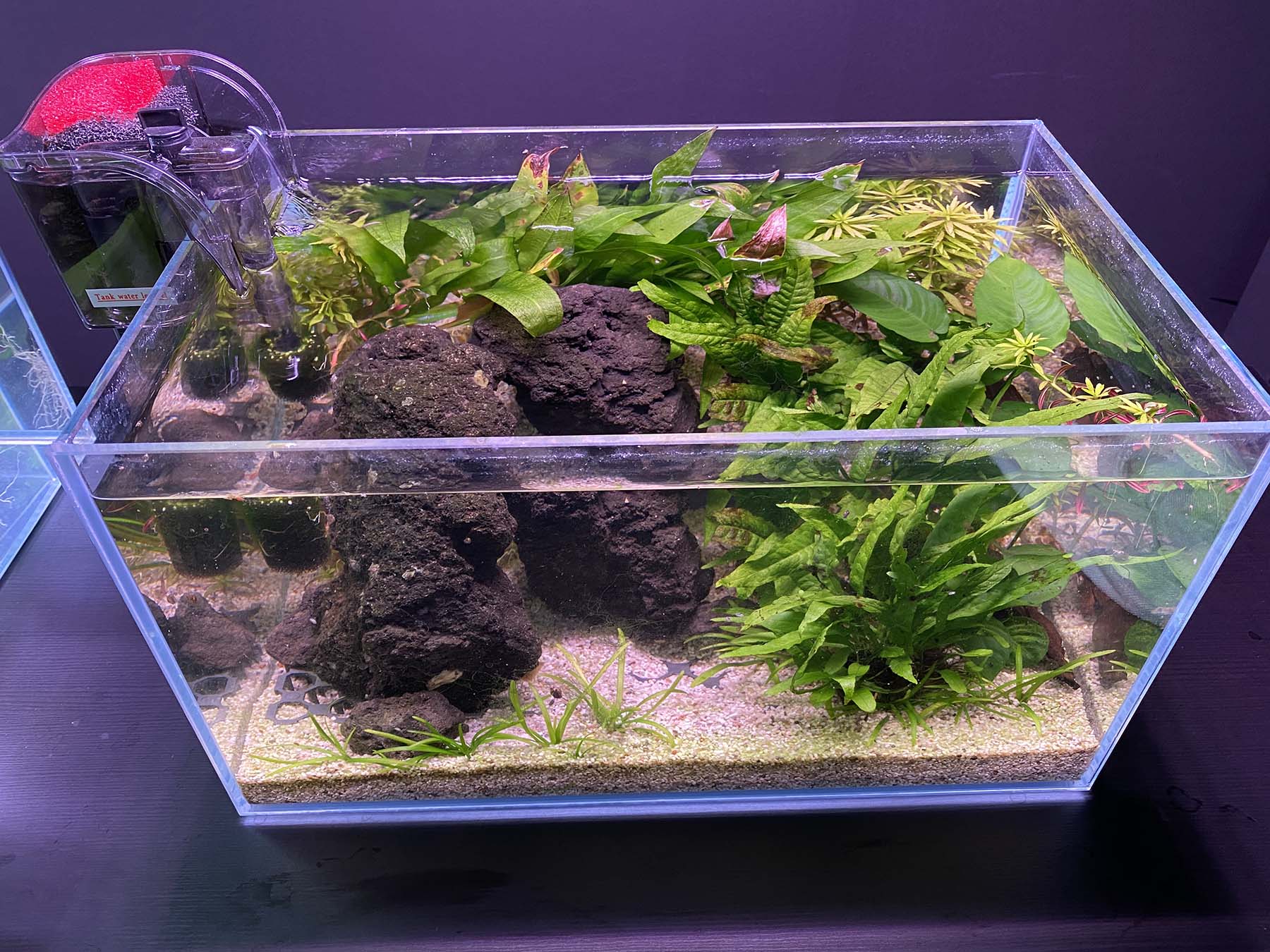The tank above feels familiar.
We see it everywhere, and it seems to conform to a standard, basic setup that works.
It can indeed.
It is possible to have a healthy planted ecosystem this way.
It is just that the odds are not in your favor.
In fact, it is so difficult to maintain a thriving planted tank this way that we avoid this conventional setup ourselves- it takes too much effort for too limited results.
While simple, this conventional setup is akin to trying to build muscle without access to weights and protein, or choosing to ride a unicycle (a single-wheeled ‘bike’, without handlebar) rather than a bicycle because the former is structurally simpler. Both are possible, but in practice much harder for the average person.
Lets look more closely:
This conventional ‘simple tank’ makes it far harder to maintain a vibrant, resilient, algae-free tank in these 3 ways:
SUBOPTIMAL FLOW
While circulation is largely invisible, it has huge impact on oxygenation and providing nutrients to plants. 80% of small hang-on-back (HOB) filters do not provide strong enough circulation, which makes it hard for plants to grow and outcompete algae. HOBs also tend to create flow patterns that change throughout the week as the water level drops due to natural evaporation. This contributes to instability and flux.
BIOFILTRATION CAPACITY.
This conventional setup often has higher livestock density than larger tanks. When paired with a small filtration system such as the one in the picture, organic waste builds up quickly, almost always resulting in recurring algae problems.
NUTRITIONAL FLUX.
Aquasoil (organic soil compressed into granules) is surprisingly effective in storing nutrients. It provides a natural buffer against the weekly flux that comes from us being busy and dosing too little on Tuesday or too much on Friday. Sand and other inert substrates on the other hand (including synthetic enriched ‘soil’ made from gravel/ silica/ clay/ lava) seem easier to handle but are far less effective as a buffer for nutrients. Plants grow well in stable environments, and fluctuations contribute to stress and trigger algae.
In our previous post, we shared how our 2Hr Adventurer ( a simple setup without CO2, but having the right infrastructure) was experiencing algae due to some factors, and how our strategy was to ‘do nothing’. You can follow the progress of the tank here.
This conventional tank above also has algae problems. In similar manner to the 2Hr Adventurer, it was planted prematurely (cycled only for 2 weeks instead of ~4) and the careless addition of 8 swordtails without quarantine resulted in dead fish that triggered a massive spike in filamentous algae. While it has similarly stabilized somewhat (after multiple water changes and keeping other parameters constant), the best strategy for this tank is not ‘do nothing’.
While patience helps, it will not improve its underlying vulnerabilities. In its present form, it remains extremely fragile. Should we add more fish, or forget to top-up the water, or skip a routine water change, the chance of algae re-emerging remains very high.
In going for this conventional setup, 80% of hobbyists go through a constant ‘boom bust’ cycle- things seem OK for a while, then crashes. The frustration leads to buying new algicides, new fertilizers or additives, which create even more flux and plant-stress.
SUMMARY
- The conventional ‘simple setup’ is ironically the hard way.
- Invest in a properly-sized external filter, use aquasoil and go for fast-growers if you are keeping fish. With these steps, the simple tank can indeed provide the simple pleasure of a vibrant, enduring slice of nature at home.

